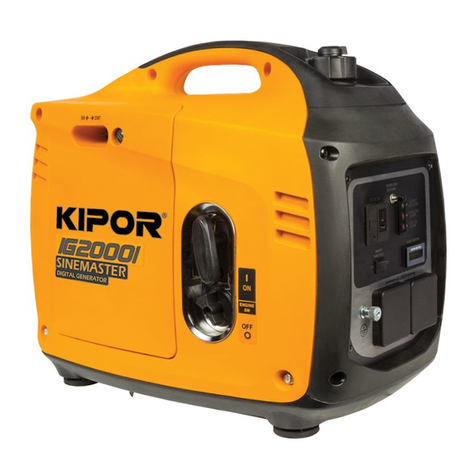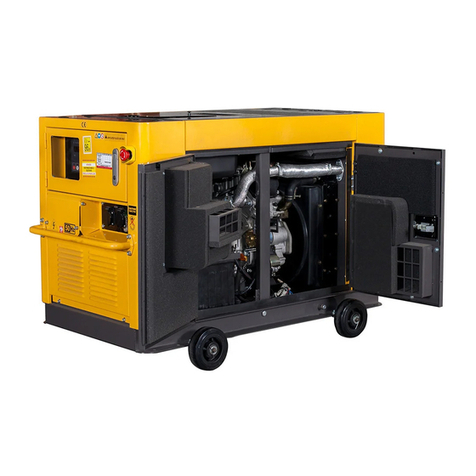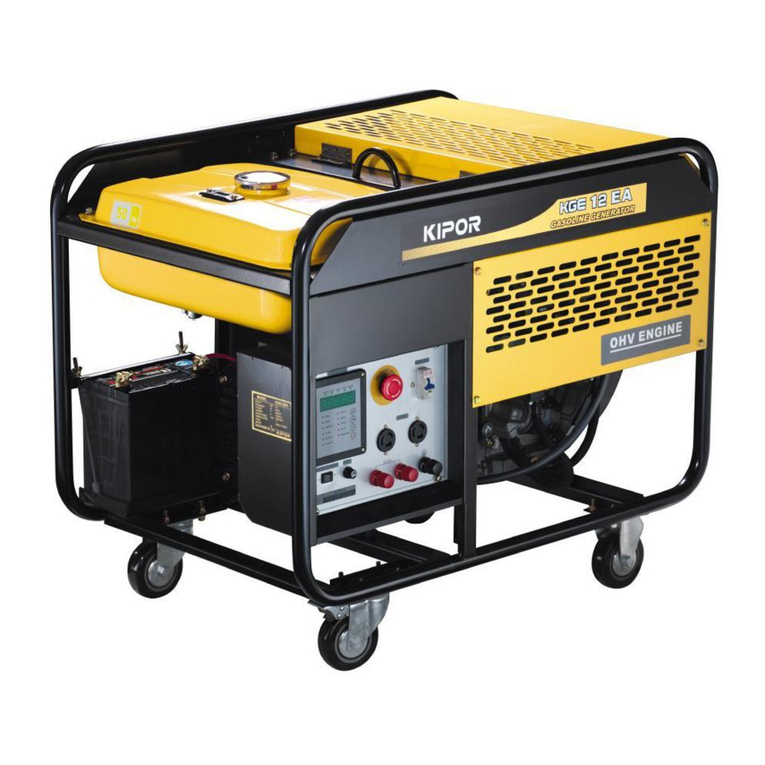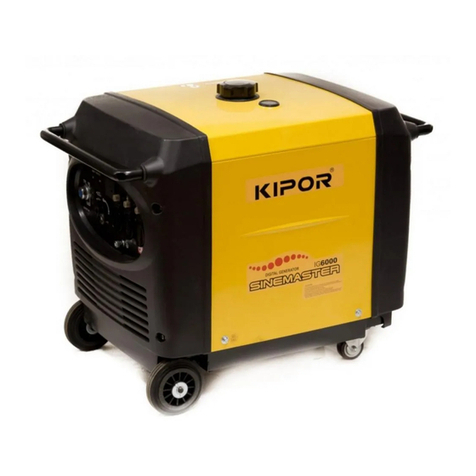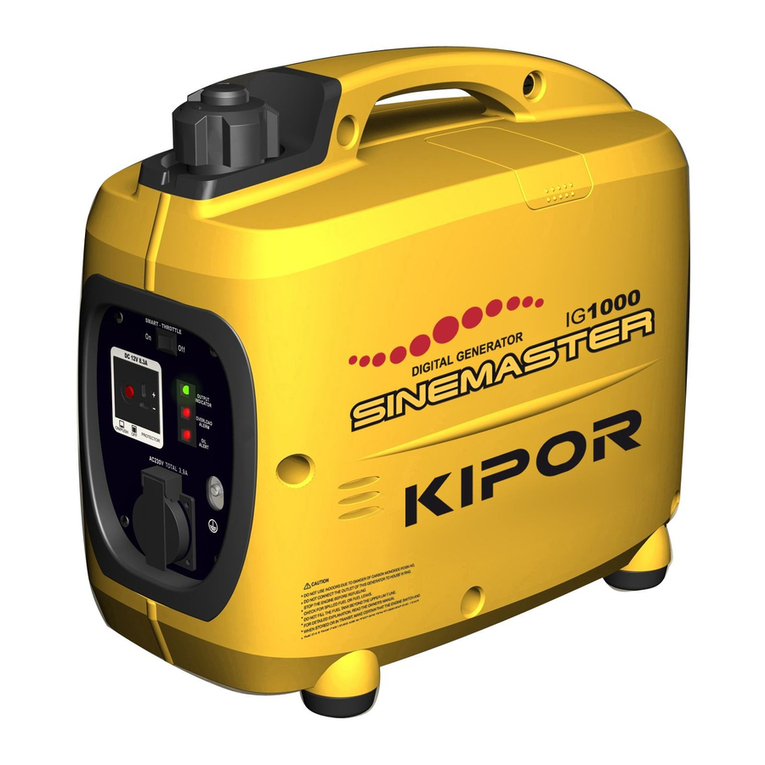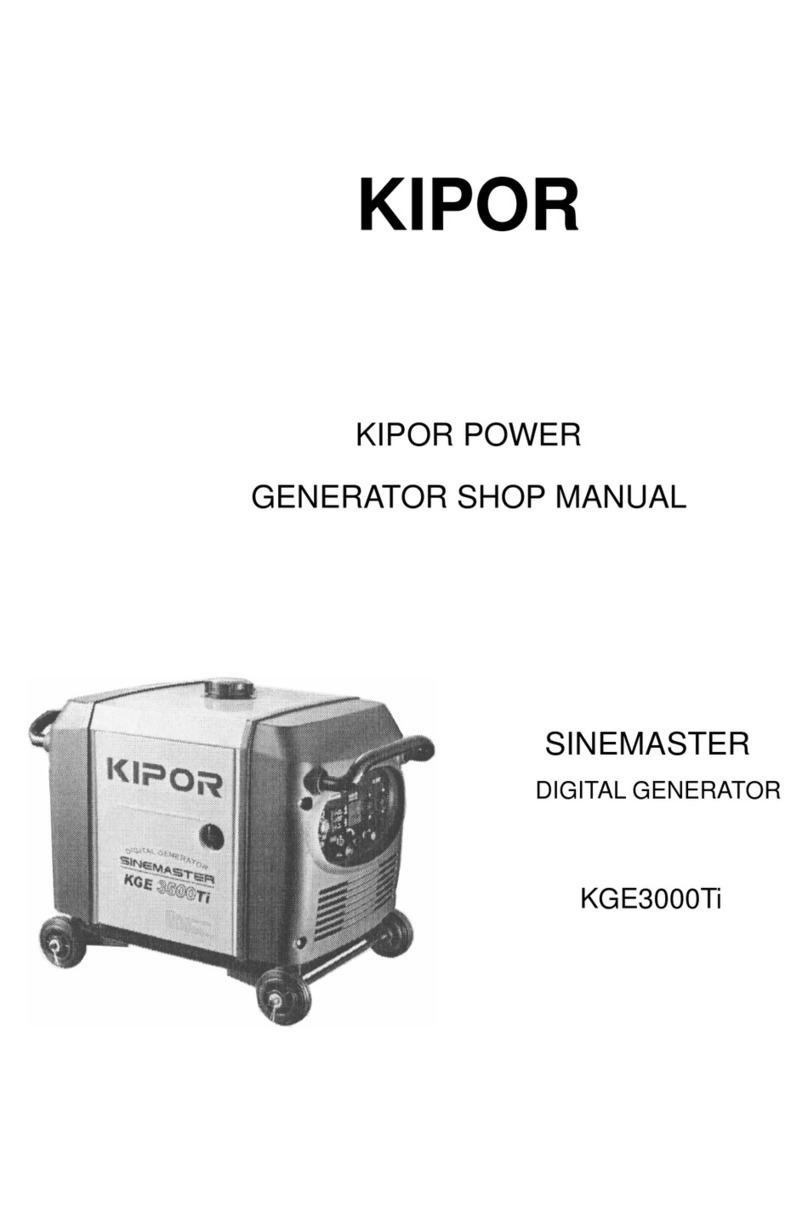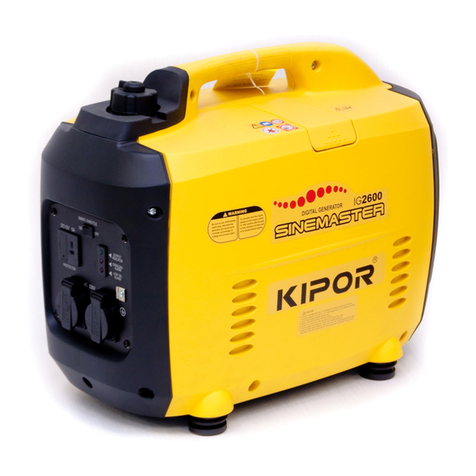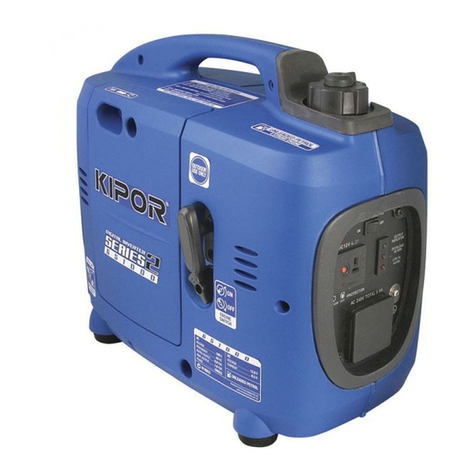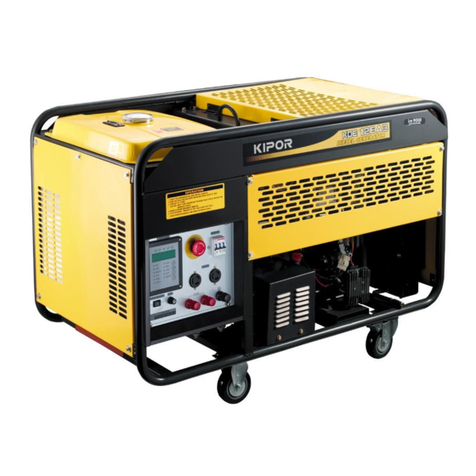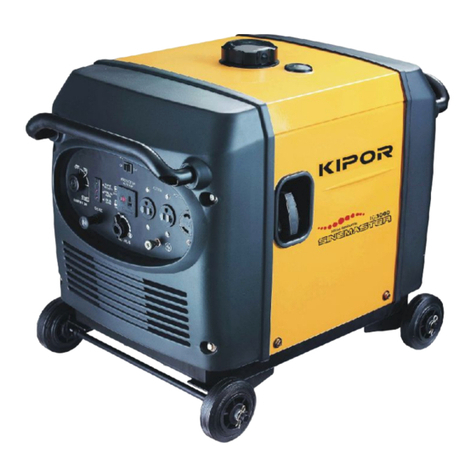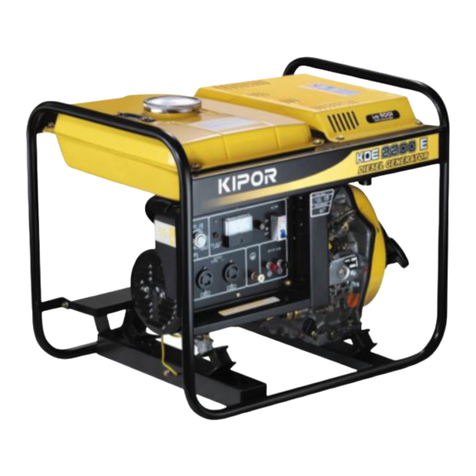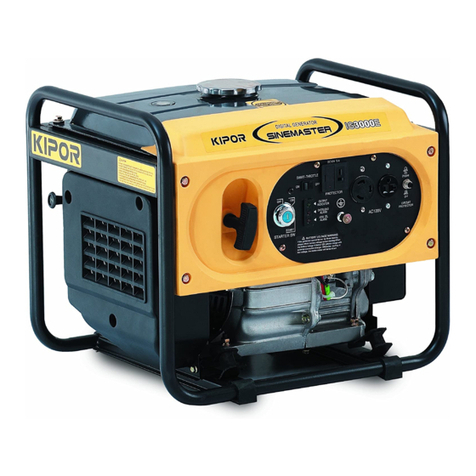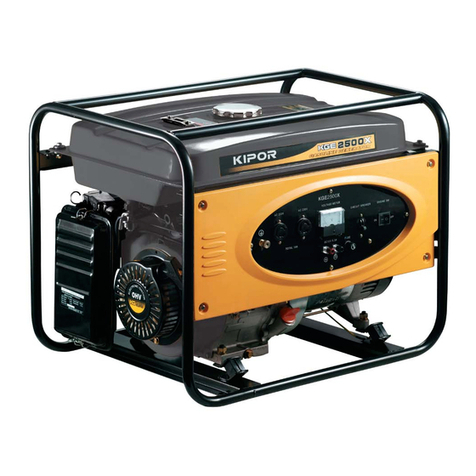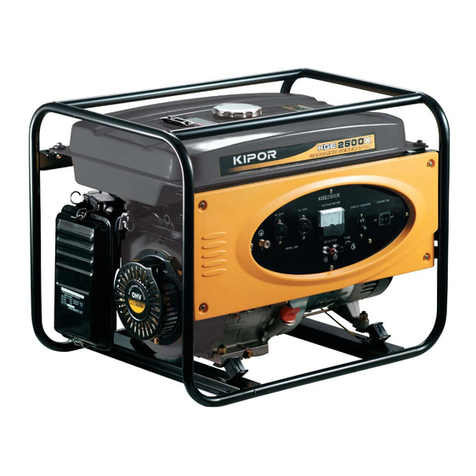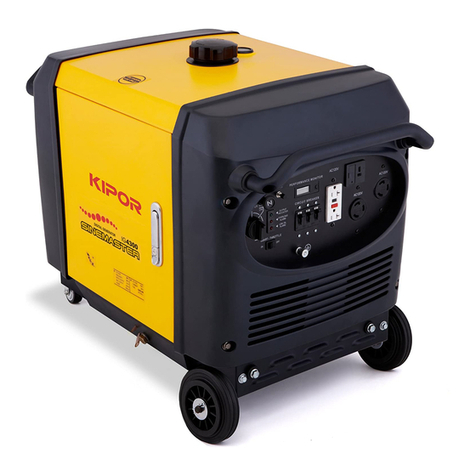1. SAFETY INSTRUCTIONS
2. SAFETY LABEL LOCATIONS
3. PRE-OPERATION CHECK
4. STARTING THE ENGINE
5. GENERATOR USE
6. STOPPING THE ENGINE
7. MAINTENANCE
8. TRANSPORTION AND STORAGE
9. TROUBLESHOOTING
10. SPECIFICATIONS
11. WIRING DIAGRAM
12. WARRANTY
1
3
5
8
11
14
15
20
21
23
24
25
CONTENTS
-25-
12. WARNING
Limited Warranty
Kipor Power Equipment
LENGTH OF WARRANTY:
Generators and/or batteries that are supplied with applicable products as standard, original
equipment are covered by this warranty from the date of original retail purchase for a period of 2
years for residential use and 1 year for commercial applications. Units used in rental fleets or as
demonstration models will be considered commercial usage. The warranty coverage is continual from
the original date of purchase, and does not restart upon the replacement of any part or complete unit.
Individual parts replaced at any point during the warranty period are only eligible for warranty
coverage for the balance of the original warranty period.
ELIGIBILITY:
To be eligible for warranty service, the product must be purchased in North America from an
authorized Kipor dealer. This warranty applies to the original retail purchaser only, and is not
transferable. Proof of purchase is required. Goods exported from North America as well as goods
sold at auction are excluded from warranty coverage.
COVERAGE:
Parts, labor and regular shipping costs will be covered by Coast Distribution for any failure that is
proven to be a failure in material or workmanship under normal use during the applicable warranty
time period. Coast Distribution reserves the right to repair or replace these parts at its option. Coast
Distribution may request defective parts to be returned. Anything replaced under warranty becomes
the property of Coast Distribution.
TO OBTAIN WARRANTYSERVICE:
Contact any authorized dealer or contact our national customer service center at:
Phone 1-877-544-4449
Fax 1-800-263-0280
If contacting us by fax or e-mail, be sure to include a description of the problem as well as all return
contact info such as address, phone number, fax number, e-mail, etc. Engine serial number and proof
of purchase is required.
EXCLUSIONS:
THIS WARRANTY DOES NOT EXTEND TO PARTS AFFECTED OR DAMAGED BY ACCIDENT
AND/OR COLLISION, NORMAL WEAR, FUEL CONTAMINATION, USE IN AN APPLICATION FOR
WHICH THE PRODUCT WAS NOT DESIGNED OR ANY OTHER MISUSE, NEGLECT,
INCORPORATION OR USE OF UNSUITABLE ATTACHMENTS OR PARTS, UNAUTHORIZED
ALTERATION, OR ANY CAUSES OTHER THAN DEFECTS IN MATERIAL OR WORKMANSHIP OF
THE PRODUCT. THIS WARRANTY DOES NOT EXTEND TO NORMAL MAINTENANCE ITEMS
SUCH AS SPARK PLUGSAND FILTERS.
DISCLAIMER OF CONSEQUENTIAL DAMAGE AND LIMITATION OF IMPLIED WARRANTIES:
COAST DISTRIBUTION DENIES ANY RESPONSIBILITY FOR LOSS OF TIME OR USE OF THE
PRODUCT, TRANSPORTATION, COMMERCIAL LOSS, OR ANY OTHER INCIDENTAL OR
CONSEQUENTIAL DAMAGE. ANY IMPLIED WARRANTIESARE LIMITED TO THE DURATION OF
THIS WRITTEN LIMITED WARRANTY.
Some states do not allow limitations on how long an implied warranty lasts and/or do not allow the
exclusion or limitation of incidental or consequential damages. Therefore, the above exclusions and
limitations may not apply to you. This warranty gives you specific legal rights, and you may also have
other rights which vary from state to state.

